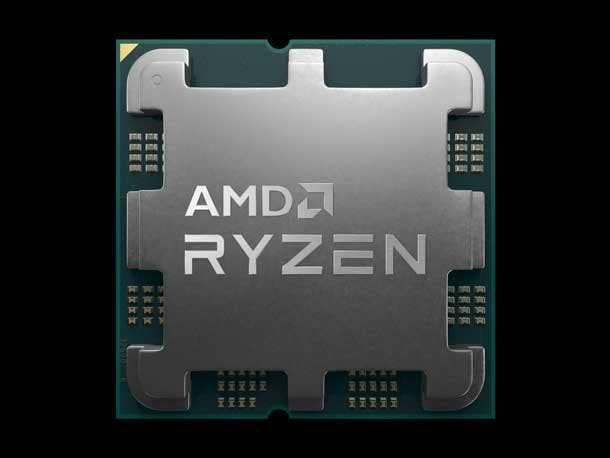AMD Gains CPU Share Against Intel In Desktop, Server Segments
by nlqip

AMD’s x86 CPU share gains against Intel in the desktop and server segments were due in part to ‘surprisingly strong’ shipments of the company’s Ryzen 5000 processors as well as its 4th– Gen EPYC chips in the first quarter, according to Mercury Research.
AMD’s share in the x86 CPU market share inched upward against Intel in the first quarter thanks in part to “surprisingly strong” shipments of the company’s Ryzen 5000 desktop processors as well as its 4th-Gen EPYC server chips.
This was based on the latest x86 CPU market-share report from Mercury Research, which said last week that AMD’s x86 CPU share grew in the first quarter by 0.4 points and 3.6 points from the same period last year to 20.8 percent against Intel’s 79.2 percent.
[Related: AMD Says MI300 Is Its ‘Fastest-Ramping Product,’ Teases New AI Chips ‘Later This Year’]
These share figures only represent CPU shipments for the PC and server markets and do not account for such products in the semicustom, embedded and IoT segments. When including those latter segments, AMD’s x86 CPU share decreased 2.4 points sequentially and 8.5 points year over year to 26.1 percent against Intel’s 73.9 percent.
Dean McCarron, president of Mercury Research, said AMD’s all-inclusive CPU share took a hit due to decreased demand for video game consoles like Sony’s PlayStation 5 impacting shipments of the company’s system-on-chips for such products.
The only other area where AMD suffered was mobile CPU market share, where Intel grew by 1 point sequentially to 80.7 percent against AMD’s 19.3 percent. However, AMD’s mobile CPU share was 3.1 points higher than it was in last year’s first quarter.
Intel gained quarterly share in the mobile CPU segment because it ended up shipping more processors in a period where both companies experienced seasonal declines. The main drivers were Intel’s 14th-Gen Core laptop processors as well as entry-level chips like the Intel Processor N100 and N200 CPUs, according to McCarron.
Intel’s Core Ultra processors for laptops, on the other hand, made a smaller impact because the ramp in shipments was “slower than expected” and it was coming “off a tiny base” from the previous quarter, the CPU market researcher said. He noted that this slower ramp was the result of what Intel recently said was a bottleneck in its chip packaging capacity.
When it came to revenue share for mobile CPUs, however, AMD decreased by 0.1 points sequentially while growing 4 points year over year to 14.9 percent against Intel’s 85.1 percent, according to AMD, which calculated the figures using Mercury Research data.
In the desktop segment, AMD’s CPU share grew 4.2 points sequentially and 4.7 points year over year to 23.9 percent against Intel’s 76.1 percent, according to Mercury Research.
Its revenue share in the segment grew 3.3 points sequentially and 3.8 points year over year to 19.2 percent against Intel’s 80.8 percent, according to AMD.
McCarron said AMD’s desktop growth was due in part to “surprisingly strong” shipments of the company’s Ryzen 5000 series processors, which expanded with new models in the first quarter after making their debut all the way back in 2020. The company’s new Ryzen 8000 processors, which include a neural processing unit for the first time in a desktop lineup, also contributed.
In the server segment, AMD’s share grew 0.5 points sequentially and 5.6 points year over year to 23.6 percent against Intel’s 76.4 percent.
AMD’s revenue share in the server segment grew 1.2 points sequentially and 5.2 points year over year to a “record” 33 percent against Intel’s 67 percent, according to AMD calculations.
While AMD and Intel “didn’t provide much insight into server CPU dynamics,” McCarron said, “it was apparent” that AMD’s 4th-Gen EPYC processors—the general-purpose models previously known under the code name Genoa—were the primary driver of year-over-year growth.
AMD added that growing adoption of its EPYC processors by enterprises and cloud service providers was the driver of revenue share growth.
What wasn’t counted as part of AMD’s server CPU shipments was the company’s recently launched Instinct MI300A accelerator chips, which include CPU cores. Had they been included, “AMD’s on-quarter share would have been higher,” according to McCarron.
Source link
lol
AMD’s x86 CPU share gains against Intel in the desktop and server segments were due in part to ‘surprisingly strong’ shipments of the company’s Ryzen 5000 processors as well as its 4th– Gen EPYC chips in the first quarter, according to Mercury Research. AMD’s share in the x86 CPU market share inched upward against Intel…
Recent Posts
- Arm To Seek Retrial In Qualcomm Case After Mixed Verdict
- Jury Sides With Qualcomm Over Arm In Case Related To Snapdragon X PC Chips
- Equinix Makes Dell AI Factory With Nvidia Available Through Partners
- AMD’s EPYC CPU Boss Seeks To Push Into SMB, Midmarket With Partners
- Fortinet Releases Security Updates for FortiManager | CISA
